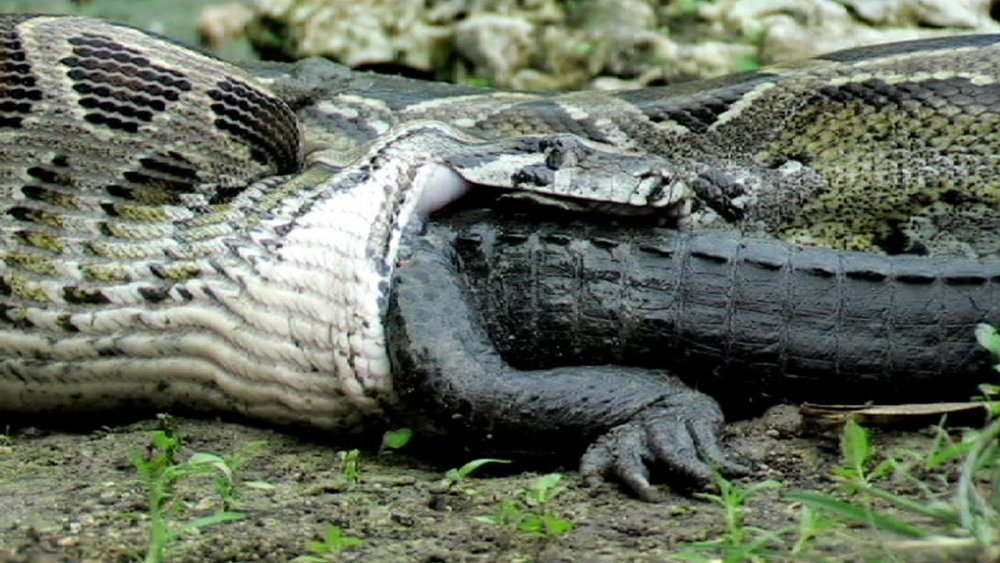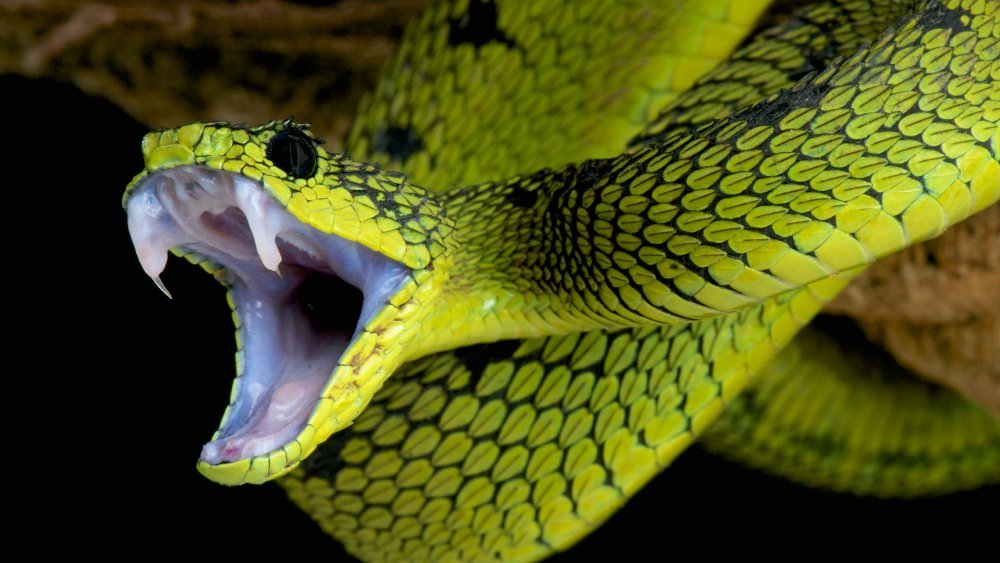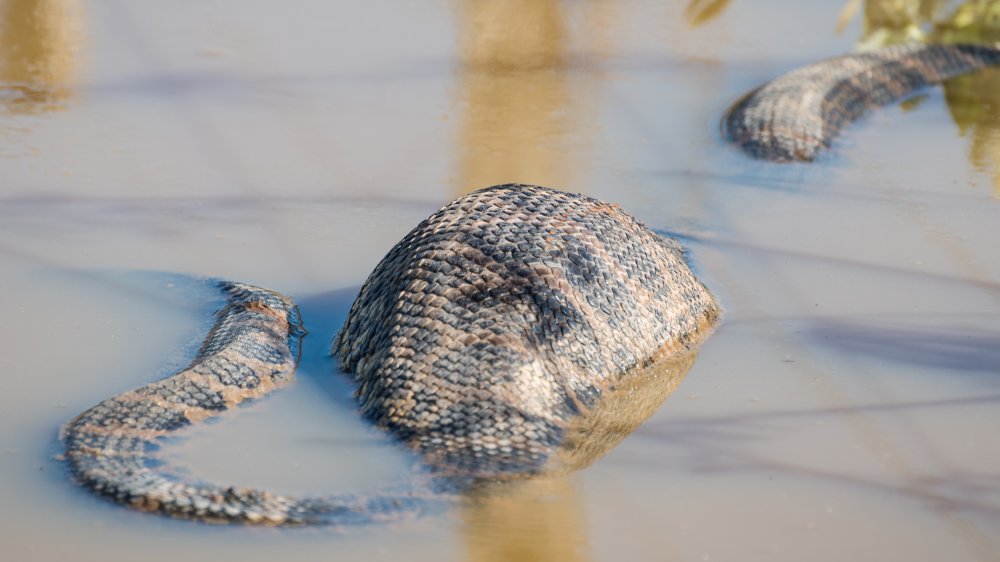What Is The Biggest Thing A Snake Can Swallow?
In 2019, Australia reaffirmed its status as the Elm Street of countries when images of one of the nightmare animals that live there got posted on Facebook. As recounted by Live Science, a python measuring between 11.5 and 13 feet long was photographed regurgitating "an even fatter python of about the same length." One can only assume the recently eaten python then threw up a third, even larger snake and that the pattern continued until the Devil's nesting doll upchucked a serpent with Freddy Krueger's head and Krueger's blades for fangs. Some people might vow never to sleep again after witnessing a slithering predator vomit out an even larger version of itself, but others may wonder, "Is there anything a snake can't cram through its cavernous maw? What's the biggest thing it can handle?"
The hinge-less jaws of death
A snake will never bite off more than it can chew because snakes can't chew. They also can't unhinge their jaws despite what many people believe. Kevin Calhoon, a curator at the Tennessee Aquarium in Chattanooga, explained, "The snake jaw isn't attached to the skull — it's attached to ligaments. They have a very flexible ligament jaw structure that allows them to stretch and open much wider."
Obviously, the snake's swallowing capacity will be partly limited by its body size. For instance, a species of threadsnake found in Barbados, "is as thin as a spaghetti noodle and small enough to rest comfortably on a U.S. quarter," according to Science Daily. Stretching less than four inches on average, it probably couldn't swallow a 12-inch python, let alone a 12-footer. However, the now-extinct Titanoboa grew to about the size of a bus and probably devoured crocodiles and giant turtles. The decidedly not-extinct anaconda can swallow five-foot long Caiman crocodiles, but those gargantuan snakes can reach 20 feet long and 330 pounds, per Live Science.
A bottomless pit of snake stomachs
While the sheer size of a meal will hinge on the size of a snake, perhaps a better measure of magnitude is the prey-to-predator weight ratio, which looks at the weight of the snake relative to what it's eating. Medium reports that one of the largest ratios ever recorded among pythons occurred when a Burmese python weighing 31.5 pounds downed a 35-pound deer (about 111 percent of the snake's weight). The python died vomiting up the deer. The book Tracks and Shadows: Field Biology as Art gave the gut-busting example of a common lancehead snake that ate an animal 1.6 times its weight. That's tantamount to a 200-pound human swallowing a 320-pound meal. However, there are limits, like when a 13-foot long Burmese python exploded after eating a 6-foot long alligator.


